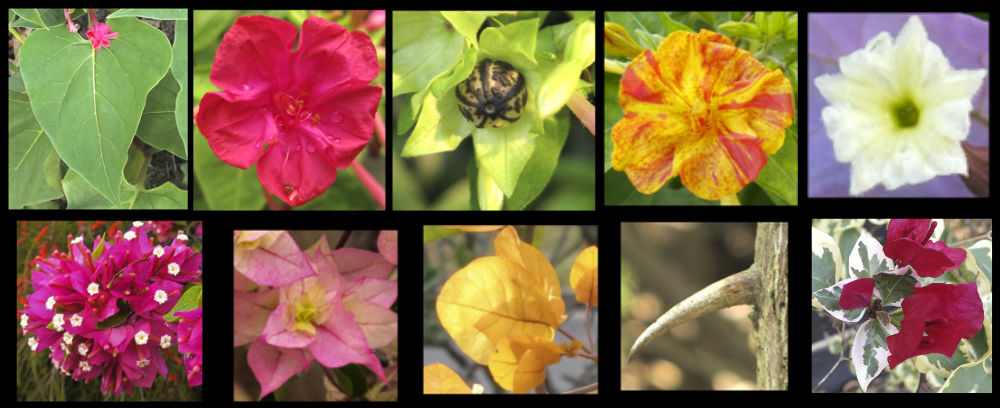Nyctaginaceae Family.
Trees, shrubs, lianas or herbs that are annual or perennial.
Roots are fibrous or tuberous.
The nodes on the stems are swollen.
Leaves opposite (rarely alternate), simple with or without a petiole.
The base can be symmetric or very unequal.
The blades, hairy or smooth, can be linear, round or ovate.
Venation is pinnate with cross veins.
Flowers, solitary or in inflorescences of up to 80, can be terminal or axillary.
Flowers are usually bisexual.
They are commonly subtended by small or medium sized bracts that are free or joined.
In single flowered inflorescences the whorl of bracts can be leaf-like and resemble a calyx.
Flowers have no petals and the tubular perianth consists of 5 (3-10) joined sepals.
The sepals are often coloured and petal-like.
The end of the tube flares into 5 lobes.
There are 5 (30) stamens with filaments of different lengths.
They can be free or have their bases fused.
Anthers open internally (introrse) via longitudinal slits.
The superior ovary consists of 1 carpel with 1 locule and 1 ovule with basal placentation.
The single style holds 1 stigma that may have short hairs.
There may be an annular nectary around base of the ovary.
The single seeded, non-fleshy fruit is often enclosed in the persistent base of the perianth.
The family has 27/33 genera with 290/390 species depending on the classification.
It is divided into 5 or 6 tribes with Bougainvilleae and Nyctagineae being the main ones plus
Boldoeae, Colignonieae, Leucasteraceae, Pisonieae +/- Caribeeae.
J.F.


